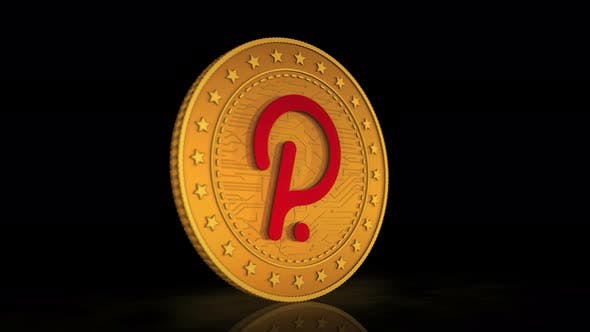
By alphacardprocess February 23, 2022
Polkadot (DOT) is not your average blockchain project. It aims to connect, interoperate between different independent or self-sufficient blockchains that are being part of the Polkadot ecosystem. So, it allows them to exchange information and value with each other directly through a decentralized internet protocol.
The Polkadot (DOT) technology is developed by the Parity Technologies (Pty). It was founded in 2015 as a startup software company and wallet best known for developing the Parity Ethereum client. The company built on an open-source environment and their main aim is to free users from any third party interferences and make them completely independent.
What are The Magic Features of Polkadot (DOT)?
So, if you are thinking that what makes DOT so special then take a look at some of its core features.
#1 Lightweight Blockchain Interoperability Protocol:
The idea behind the DOT was first shared by Gavin Wood in 2015 who is also the founder and former CTO of Parity Technologies. He has also helped to develop the Ethereum blockchain protocol.
The Polkadot (DOT) system creates a flexible environment for easy connection between individual blockchains which are known as parachains in this case. Additionally, these parachains can be customized by adding more functionalities to them as required by the user.
So, the DOT works as a bridge between these parachains which can interact freely with each other without requiring any 3rd party interference. This gives the user complete control over their assets and information.
#2 Cross-Chain Smart Contracts:
The Polkadot (DOT) token provides cross-chain communication to the smart contracts which make it possible for them to act upon different blockchains. It is one of the core reasons why this technology is getting so much attraction from the blockchain community across the world.
#3 Data Transactions:
The Polkadot (DOT) protocol allows a cross-chain exchange of data as well, giving rise to a network of databases. The idea behind it is to share and exchange information between multiple blockchains so that the users can have access to all the necessary information whenever they need it.
#4 Access All Blockchains:
One of the most talked about features of Polkadot (DOT) is ‘Access all Blockchains’. It allows users to get access to any blockchain regardless of its nature or purpose. Whether it is private, public or even centralised, the user can get the desired access with the help of Polkadot (DOT) protocol.
#5 Security:
With Polkadot (DOT), you don’t need to worry about the security of your blockchains anymore. Because it is linked to numerous chains which are highly secure, the chances of any unwelcome interference is pretty low.
#6 Privacy:
The privacy issue with blockchain has always been a question mark for many experts in the community. But with Polkadot (DOT), users can rest assured that their information and data is kept away from any unwarranted exposure.
#7 Infinite Scalability:
The traditional blockchain based applications are set to become highly congested with time because of the growing number of users. But Polkadot (DOT) enables its users to add more chains into the system without worrying about scalability which ensures infinite scalability.
Polkadot (DOT) Directed Acyclic Graph (DAG):
The Polkadot (DOT) protocol is based on the principle of ‘Directed Acyclic Graph’ which is also known as DAG. It is an important part of this system and it works in a way that it is linked to numerous parallel blockchains instead of a single blockchain.
The main purpose behind this unique feature is to avoid congestion which can be caused by the heavy traffic on a single blockchain network. DAG basically helps in creating smaller sub-networks within the Polkadot (DOT) system.
How does PolkaDot (DOT) Work?
The Polkadot (DOT) system consists of 5 different types of participants. They are:
Validators:
They play a crucial role in the Polkadot (DOT) protocol as they help to drive forward the consensus mechanism and also do the validation work. In order to make a transaction, a validator needs to get elected by the stakeholders.
Collators:
They are responsible for keeping a track of all the blocks and transactions within the Polkadot (DOT) system. In order to take part in this process, they need to deposit DOT tokens with the network. They also get rewarded for their role.
Fishermen:
They are responsible for finding out the faulty transactions which have been executed by the collators within the network. They play an important role in keeping the system safe and secure by eliminating all rogue elements.
Parachains:
They are blockchains or groups of blockchains which are linked to the Polkadot (DOT) network. For example, Ethereum is a parachain within the Polkadot (DOT) system which has its own consensus mechanism and rules.
